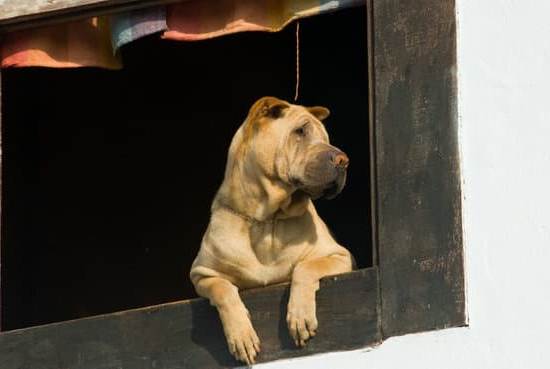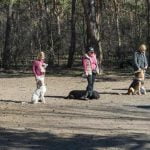Are you wondering how to paper train a 2 year old dog? Paper training is often associated with puppies, but it is indeed possible to successfully paper train an older dog. In this article, we will debunk myths and misconceptions surrounding the paper training of older dogs and provide a step-by-step guide to help you effectively train your 2-year-old canine companion.
Paper training a 2-year-old dog may seem daunting, but with the right approach and understanding, it can be a successful and rewarding experience for both you and your furry friend. Whether you’re dealing with a newly adopted adult dog or simply looking for an alternative potty training method, paper training can be an effective solution.
In the following sections, we will explore essential preparations for paper training, tips for choosing the right location, a detailed step-by-step guide for the first week of training, common challenges and troubleshooting solutions, as well as long-term reinforcement tips. Additionally, we will discuss the benefits of paper training for older dogs and why it’s worth the effort.
Let’s dive in and discover how paper training can foster a strong bond between you and your beloved pet.
Is It Possible to Paper Train a 2-Year-Old Dog? Debunking Myths and Misconceptions
Age Is Just a Number
One of the most common myths about paper training is that it is only effective for young puppies. However, this couldn’t be further from the truth. While it may require more patience and consistency, paper training a 2-year-old dog is absolutely possible. Dogs of any age can learn new behaviors with the right approach and techniques.
Previous Training Doesn’t Matter
Another misconception is that older dogs who have previously been trained to go outside will not be able to adapt to paper training. This is not necessarily true. With sufficient praise, positive reinforcement, and a consistent routine, older dogs can successfully transition from potty breaks outside to using designated indoor potty areas.
It’s Too Late to Start
Some people believe that if they haven’t paper trained their dog since puppyhood, it’s too late to start now. However, it’s important to remember that dogs are adaptable creatures, and with the right guidance, they can learn at any age. It’s never too late to start implementing new habits and training methods with your furry companion.
Preparing for Paper Training
When preparing to paper train a 2-year-old dog, it is essential to gather all the necessary supplies and tools to ensure a smooth and successful training process. Whether you have decided to paper train your dog due to living in an apartment or for any other reason, having the right equipment can make a big difference in the training’s effectiveness.
Supplies Needed
One of the key supplies needed for paper training your 2-year-old dog is, of course, plenty of newspapers or pee pads. These will be used as the designated area for your dog to relieve itself.
It is important to have enough newspapers or pee pads on hand, especially during the initial stages of training when accidents are more likely to occur. Additionally, investing in a good supply of cleaning products designed for pet accidents is imperative for keeping your home clean and odor-free during the paper training process.
Tools Required
In addition to the necessary supplies, there are specific tools that can aid in successfully paper training your older dog. A crate or playpen can be extremely helpful in managing your dog’s toileting behavior during the training period. This provides a designated space where your dog can stay when unsupervised, reducing the likelihood of accidents elsewhere in the house.
Additionally, consider purchasing treats and rewards that will incentivize and reinforce positive toilet behavior during the training process. These tools, along with patience and consistency, will play a crucial role in effectively paper training your 2-year-old dog.
Choosing the Right Location for Paper Training
When paper training a 2-year-old dog, choosing the right location for the training is crucial for success. Here are some tips and considerations to keep in mind when selecting the spot for your dog’s paper training:
- Accessibility: Choose a location that is easily accessible to your dog at all times. This will help ensure that they can quickly get to the designated area when they need to relieve themselves.
- Privacy: Dogs, like humans, appreciate privacy when going to the bathroom. Select a quiet and low-traffic area for the paper training spot to help your dog feel comfortable and at ease.
- Easy clean-up: Opt for an area that is easy to clean and maintain. Avoid carpeted areas or places with expensive flooring that can be easily damaged by accidents.
- Consistency: It’s important to choose a location that will remain consistent throughout the paper training process. Changing the location of the designated spot can confuse your dog and make it harder for them to understand where they are allowed to go.
By taking these tips and considerations into account, you can choose the best location for paper training your 2-year-old dog, setting them up for success in learning this new behavior. Remember that patience, consistency, and positive reinforcement are key elements in achieving successful paper training with an older dog.
Step-by-Step Guide to Paper Training a 2-Year-Old Dog
When paper training a 2-year-old dog, it’s important to approach the process with patience and consistency. Day 1 marks the beginning of this training journey, and setting realistic expectations is crucial. On the first day, designate a specific area in your home for the paper training. This should be a quiet and easily accessible spot for your dog.
Start by laying down several layers of newspaper or puppy pads in the designated area. Once your dog wakes up or after each meal, bring them to this area and encourage them to relieve themselves on the paper. Positive reinforcement is key during this stage – praise your dog when they use the paper correctly, but avoid scolding if accidents occur.
Days 2 to 7 are all about repetition and establishing a routine for your 2-year-old dog. Take your dog to the designated area consistently throughout the day, especially after eating, drinking, playing, or napping. Keep an eye on their behavior and body language as they adjust to using the paper for elimination.
Gradually reduce the number of papers used and concentrate them in one spot to help reinforce where they should go. With consistent training and positive reinforcement, most dogs can make significant progress within a week.
| Day | Key Training Tips |
|---|---|
| Day 1 | Set up designated area with several layers of paper; provide positive reinforcement when using it correctly. |
| Day 2-7 | Consistently take your dog to the designated area after meals or naps; Concentrate papers in one spot; Use positive reinforcement. |
Common Challenges and Troubleshooting
When paper training a 2-year-old dog, it is important to understand that accidents and setbacks are a normal part of the process. It’s crucial to remain patient and persistent throughout the training period. Here are some common challenges you may encounter while paper training your older dog, along with tips for troubleshooting:
1. Accidents outside the designated area: Despite your best efforts, your dog may still have accidents outside the designated paper training area. This can be frustrating, but it’s important not to scold or punish your dog. Instead, carefully clean up the accident using an enzymatic cleaner to remove any lingering scent that may attract your dog back to the same spot.
2. Inconsistency in using the papers: Your dog may show inconsistency in using the papers for elimination, especially in the initial days of training. To address this issue, try using positive reinforcement such as treats and praise whenever your dog successfully uses the designated area for elimination. Consistency in rewarding good behavior will encourage your dog to continue using the papers.
3. Regression in behavior: It is natural for some dogs to experience regression in their paper training behavior, particularly during times of stress or change in routine. If you notice regression in behavior, re-evaluate possible stressors in your dog’s environment and provide extra reassurance and support during this time.
By understanding these common challenges and implementing effective troubleshooting strategies, you can navigate through any setbacks that may arise during the paper training process with your 2-year-old dog. Remember to remain patient, consistent, and compassionate as you work towards successful paper training.
Reinforcing Paper Training
Now that you have successfully paper trained your 2-year-old dog, it is important to reinforce the training for long-term success and consistency. Consistency is key when it comes to maintaining good behavior, so it’s crucial to continue reinforcing the paper training even after your dog has mastered it.
One way to reinforce paper training is by maintaining a consistent schedule for bathroom breaks. Dogs thrive on routine, so taking them to the designated paper training area at the same times each day will help reinforce the behavior. Be sure to praise them when they use the designated area and offer a treat as positive reinforcement.
In addition to maintaining a consistent schedule, it’s important to continue monitoring your dog’s behavior and addressing any accidents or setbacks promptly. If your dog has an accident outside of the designated area, clean it up immediately and continue with your training regimen.
Remember to be patient and understanding throughout this process, as accidents are a natural part of any training program. With time and consistency, your 2-year-old dog will become fully accustomed to using the paper training area for their bathroom needs.
The Benefits of Paper Training for Older Dogs
Paper training a 2-year-old dog may seem like a daunting task, but the benefits far outweigh the effort. One of the key advantages of paper training for older dogs is its convenience, especially for owners who live in apartments or have limited outdoor space. Unlike traditional housebreaking methods that require frequent trips outside, paper training allows the dog to relieve itself indoors on designated pads.
Another benefit of paper training is its suitability for older dogs who may have mobility issues or health concerns that make frequent outdoor trips impractical. In these cases, paper training provides a safe and easily accessible alternative for the dog to relieve itself without causing discomfort or risking further injury.
Furthermore, paper training can be valuable in situations where the owner’s schedule makes it difficult to take the dog outside frequently. Whether due to work commitments or physical limitations, some owners may find it challenging to maintain a consistent outdoor bathroom routine. Paper training offers a solution by providing a designated area inside where the dog can relieve itself when necessary.
| Benefits of Paper Training | Description |
|---|---|
| Convenience | Allows dogs to relieve themselves indoors on designated pads instead of requiring frequent trips outside. |
| Suitability for Older Dogs | Provides a safe and easily accessible alternative for dogs with mobility issues or health concerns. |
| Adaptability to Owner’s Schedule | Offers a solution for owners with limited time or physical limitations who find it challenging to maintain consistent outdoor bathroom routines. |
Conclusion
In conclusion, paper training a 2-year-old dog is not only possible but also a rewarding experience for both the dog and the owner. It requires patience, consistency, and a positive attitude, but the benefits far outweigh the effort. By understanding the myths and misconceptions surrounding paper training older dogs and following a step-by-step guide, owners can successfully teach their furry companions to use designated potty areas indoors.
The bond between a dog and its owner is strengthened through paper training. It fosters trust, communication, and mutual understanding. As the owner takes the time to teach and guide their dog through this process, they are also building a deeper connection with them. Celebrating each milestone along the way is important, as it reinforces the positive behavior and encourages further success.
Ultimately, paper training provides older dogs with a sense of security and comfort. It allows them to have a designated area for pottying indoors, especially in cases where outdoor access may be limited. With proper reinforcement and long-term consistency, paper training can lead to a happier and healthier relationship between the dog and its owner. Remember that every dog is different, so be patient and understanding as you work towards achieving your paper training goals with your beloved pet.
Frequently Asked Questions
Can a 2 Year Old Dog Still Be Trained?
Yes, a 2 year old dog can still be trained. While it may require more patience and consistency compared to training a younger dog, it is definitely possible. The key is to use positive reinforcement techniques, be patient, and set realistic expectations.
Is It Too Late to Potty Train a 2 Year Old Dog?
It’s not necessarily too late to potty train a 2 year old dog, but it may be more challenging than training a younger puppy. It’s important to first rule out any medical issues that could be causing the problem and then work on consistent training and routine to encourage good bathroom habits.
Can a 2 Year Old Dog Be Housetrained?
Yes, a 2 year old dog can be housetrained. Again, consistency and patience are key when it comes to this process. It may take longer for an older dog to grasp the concepts of housetraining, but with the right approach, it can certainly be achieved.

Welcome to the blog! I am a professional dog trainer and have been working with dogs for many years. In this blog, I will be discussing various topics related to dog training, including tips, tricks, and advice. I hope you find this information helpful and informative. Thanks for reading!





